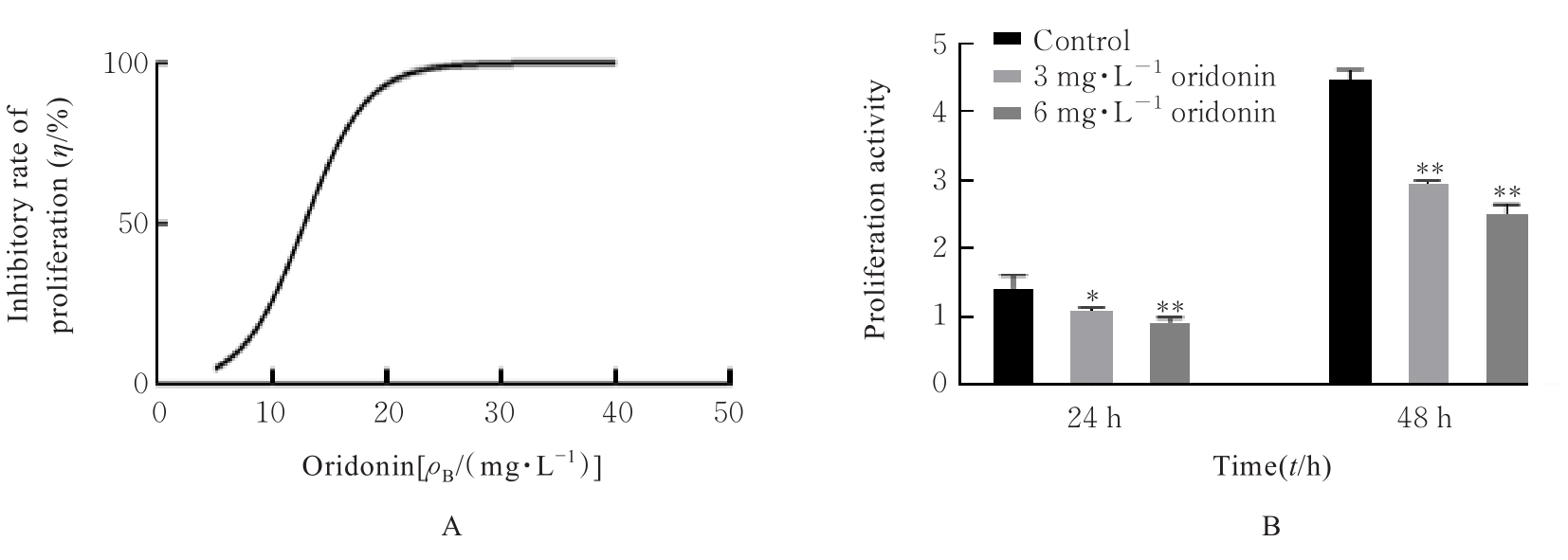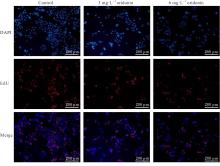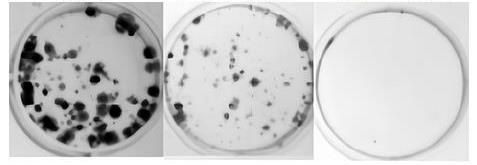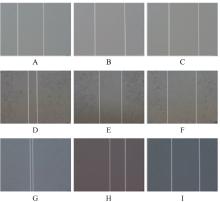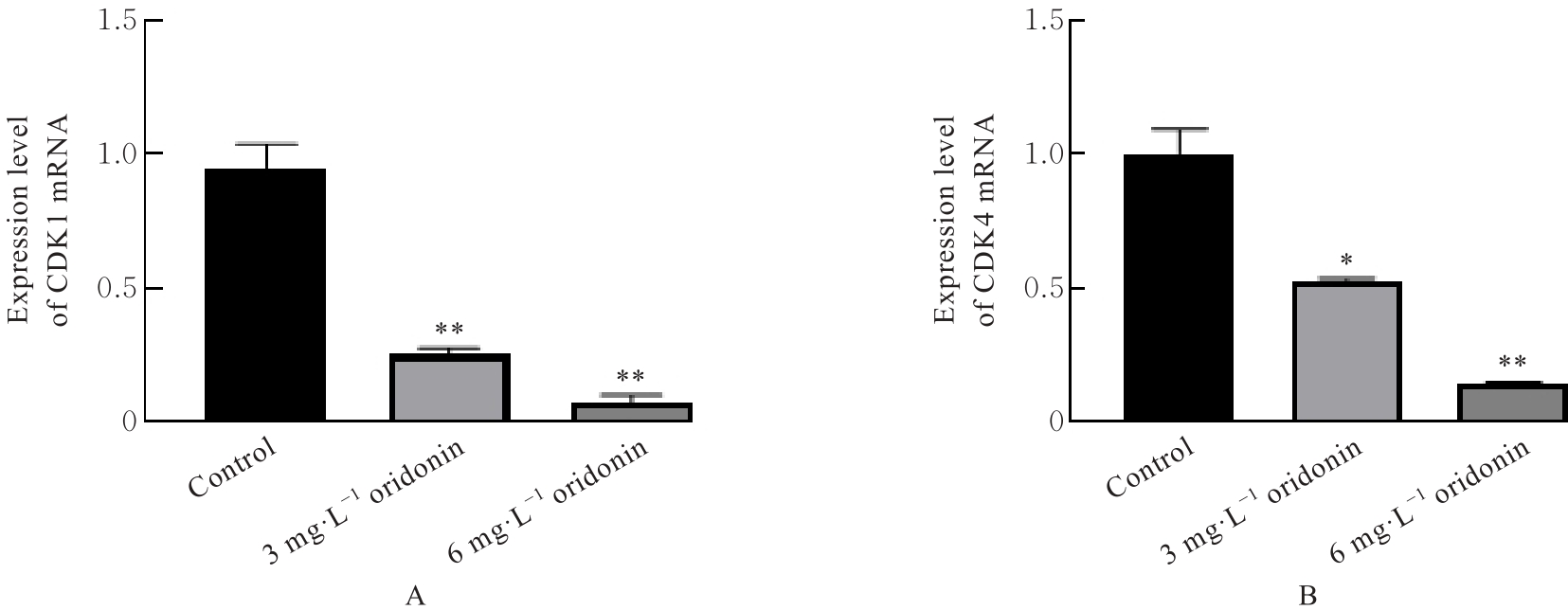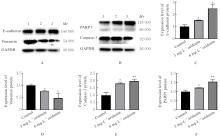吉林大学学报(医学版) ›› 2024, Vol. 50 ›› Issue (4): 917-924.doi: 10.13481/j.1671-587X.20240405
冬凌草甲素对人鼻咽癌HONE-1细胞增殖、迁移和凋亡的影响
梁超1,2,代娟娟2,周宁3,王丹丹1,2,赵杰1,2,安迪1,2,武艳1,2( )
)
- 1.滨州医学院附属医院医学研究中心,山东 滨州 256600
2.滨州医学院附属医院肿瘤科,山东 滨州 256600
3.滨州医学院附属医院耳鼻咽喉头颈外科,山东 滨州 256600
Effect of oridonin on cell proliferation, migration, and apoptosis of human nasopharynx carcinoma HONE-1 cells
Chao LIANG1,2,Juanjuan DAI2,Ning ZHOU3,Dandan WANG1,2,Jie ZHAO1,2,Di AN1,2,Yan WU1,2( )
)
- 1.Medical Research Center, Affiliated Hospital, Binzhou Medical University, Binzhou 256600, China
2.Department of Oncology, Affiliated Hospital, Binzhou Medical University, Binzhou 256600, China
3.Department of Otolaryngology Head and Neck Surgery, Affiliated Hospital, Binzhou Medical University, Binzhou 256600, China
摘要:
目的 探讨冬凌草甲素对人鼻咽癌HONE-1细胞增殖、迁移、上皮-间质转化(EMT)和凋亡的影响,阐明其相关抗肿瘤机制。 方法 鼻咽癌HONE-1细胞经不同浓度(0、5、10、20、40、80和160 mg·L-1)冬凌草甲素处理48 h后,采用CCK-8法检测各组细胞增殖抑制率,确定后续实验的用药浓度。HONE-1细胞分为对照组、3 mg·L-1冬凌草甲素组和6 mg·L-1冬凌草甲素组,培养24和48 h后,采用CCK-8法检测各组细胞增殖活性,5-乙炔基-2'-脱氧尿嘧啶核苷(EdU)法检测各组细胞中EdU阳性细胞率,克隆形成实验检测各组细胞中克隆形成数,Transwell小室实验和细胞划痕实验检测各组细胞中迁移细胞数和划痕愈合率,实时荧光定量PCR(RT-qPCR)法检测各组细胞中细胞周期蛋白依赖性激酶1(CDK1)和细胞周期蛋白依赖性激酶4(CDK4)mRNA表达水平,Western blotting法检测各组细胞中E-钙黏蛋白(E-cadherin)、波形蛋白(Vimentin)、含半胱氨酸的天冬氨酸蛋白水解酶3(Caspase-3)和多腺苷二磷酸核糖聚合酶1(PARP1)蛋白表达水平。 结果 CCK-8法确定冬凌草甲素48 h半数抑制浓度(IC50)为12.18 mg·L-1,以1/4 IC50和1/2 IC50值为后续实验用药浓度。与对照组比较,24和48 h时3和6 mg·L-1冬凌草甲素组细胞增殖活性降低(P<0.05或P<0.01),EdU阳性细胞率降低(P<0.05或P<0.01),细胞中克隆形成数和迁移细胞数减少(P<0.05或P<0.01),划痕愈合率降低(P<0.05或P<0.01),细胞中CDK1和CDK4 mRNA表达水平降低(P<0.05或P<0.01),E-cadherin、Caspase-3和PARP1蛋白表达水平升高(P<0.05或P<0.01),Vimentin蛋白表达水平降低(P<0.05)。 结论 冬凌草甲素可通过抑制细胞周期相关蛋白的表达及EMT,进而抑制人鼻咽癌HONE-1细胞增殖、克隆形成和迁移能力,促进细胞凋亡,发挥抗肿瘤作用。
中图分类号:
- R285.5

